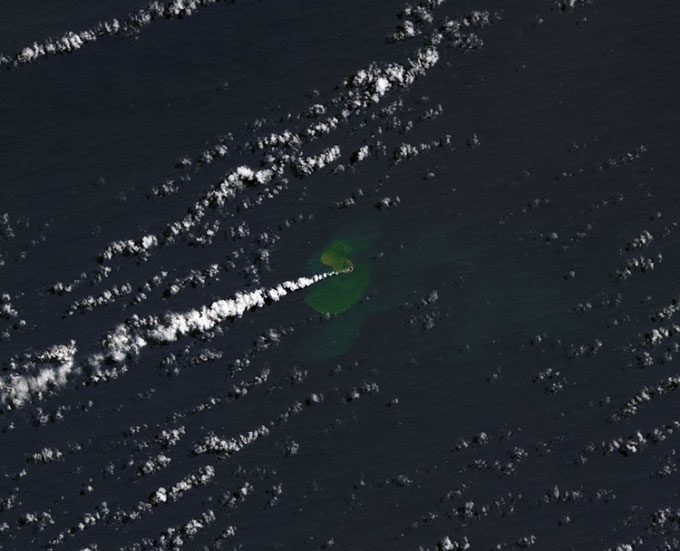Lava erupted from the underwater volcano Home Reef solidified, creating a new island with an area of approximately 24,000 m2.
According to NASA’s Earth Observatory, a new island has emerged in the southwestern Pacific, in an area rich with underwater volcanoes, as reported by IFL Science on September 22. Home Reef Volcano, located near the Central Tonga archipelago, erupted on September 10, and within just 11 hours, a landmass formed from lava cooled and solidified by seawater surfaced.

Landsat 9 satellite captures the new island with columns of steam and ash erupting, surrounding seawater changing color, on September 14. (Photo: NASA Earth Observatory)
On September 14, NASA’s Landsat 9 satellite photographed the island, which at that time had an area of about 4,000 m2. In the following days, lava continued to erupt, and the new island grew larger. By September 16, the island had a diameter of 170 m. Two days later, it expanded to 182 m. As of September 20, it reached an area of 24,000 m2.
In the images captured by Landsat 9, large plumes of steam and ash are rising from the volcano. A discolored water area surrounding the landmass indicates the presence of superheated, acidic seawater rich in volcanic rock and sulfur.
The new island is located southwest of Late Island, northeast of Hunga Tonga-Hunga Ha’apai, and northwest of Mo’unga’one Island. This area lies within the Tonga-Kermadec subduction zone, where three tectonic plates are slowly colliding. This tectonic activity has created an underwater mountain range with the highest density of underwater volcanoes in the world.
The new island may not last long. Erosion from weather, waves, and ocean currents can quickly break down volcanic rock. Consequently, such new islands often disappear rapidly.
However, some islands manage to endure. In 2014, an underwater volcano in the same Pacific region erupted and created Hunga Tonga-Hunga Ha’apai. Despite its youth, the island has developed an ecosystem with vibrant pink flowering plants, brown noddy birds, and gray-backed owls, astonishing scientists.


















































